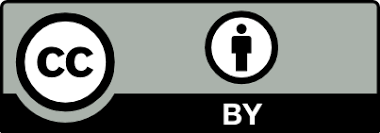On The Digital Singularity
Recognising Virtual Property Through The Eyes of New Jurisprudence Over The Conflicts of Digital Goods
DOI:
https://doi.org/10.54934/ijlcw.v1i1.10Keywords:
Digital Law, Virtual Worlds, Virtual Property, Contracts of Adhesion, NFTAbstract
The present paper focuses on the analysis of bibliography, jurisprudence and case studies internationally such as Bragg v Linden Labs, forming an analysis of the obstacles for the recognition of virtual property as well as providing arguments for it’s acknowledgment on a multitude of legal systems internationally, all the while incentivizing the debate for its implementation with the use of a set of doctrines and directives. For this purpose, we will make comparisons of the different concepts of property on an international scale through the analysis of a host of different doctrines and jurisprudence from the United States, Europe, Russia and Brazil, aiming to demonstrate the resilience or acceptance of this concept of property. Finally, we will present at the end of this article the aforementioned directives that will serve to guide future discussions and implementations of virtual property.
References
A customization option for a player's in-game avatar or equipment that changes its appearance. Skins are featured as part of metagame loot drops, with most games rewarding them based on scarcity or by awarding skins for completing certain objectives or placing high in competitive modes. This enables players to display rare achievements or high skill levels. Skins can also be obtained through in-app purchases or from game currency, depending on the game and the developer's monetization methodology. In gacha games, for instance, skins of some characters may require the purchase of a bundle, while others are more easily accessible through spending diamonds acquired in the game instead of the player's cash. Skins may be only decorative, or they can also provide the character with stat boosts.
Alemi, F. (2007). An avatar’s day in court: A proposal for obtaining relief and resolving disputes in virtual world games. UCLA JL & TECH., 2007, 6.
Alexy, R. (2008). Teoria dos direitos fundamentais.
Arkhipov, V. V. (2019). The Internet Law. Urait, 211
Assael, S. H. A. U. N. (2017). Skin in the game. Retrieved on the 31st of October, 2021 from: https://shaunassael.com/wp-content/uploads/Skin-in-the-Game-Counter-Strike.pdf.
Bragg v. Linden Research, Inc., 487 F. Supp. 2d 593 (United States District Court, E.D. Pennsylvania, May, 30, 2007) https://opencasebook.org/documents/1552/
Chein, A. (2006). A practical look at virtual property. . John's L. Rev., 80, 1059.
Civil Code of the Russian Federation, Art. 128 (1994). Retrieved on the 3rd of January, 2022 from: http://www.consultant.ru/document/cons_doc_LAW_5142/f7871578ce9b026c450f64790704bd48c7d94bcb/
Content creation is the contribution of information to any media and most especially to digital media for an end-user/audience in specific contexts.
Content ID is YouTube's automated, scalable system that enables copyright owners to identify YouTube videos that include content they own. More info on the Content ID system can be found on the internet at https://www.youtube.com/watch?v=9g2U12SsRns&ab_channel=YouTubeCreators.
Erlank, W. (2012). Property in virtual worlds. Available at SSRN 2216481
Fairfield, J. A. (2005). Virtual property. BUL Rev., 85, 1047
For YouTube to retain DMCA safe harbor protection, it must respond to copyright infringement claims with a notice and take-down process. YouTube's own practice is to issue a "YouTube copyright strike" on the user accused of copyright infringement. More info on DMCA Takedowns and the Youtube Strike system can be found on the internet at https://www.eff.org/issues/intellectual-property/guide-to-youtube-removals
Free-to-play (F2P or FtP) video games are games that give players access to a significant portion of their content without paying or don't require paying to continue playing. Free-to-play is distinct from traditional commercial software, which requires a payment before using the game or service. It is also separate from free games, usually referred to as freeware, which are entirely costless.
George, C. E., & Scerri, J. (2007). Web 2.0 and User-Generated Content: legal challenges in the new frontier. Journal of Information, Law and Technology, 2.
Hoge Raad der Nederlanden, LJN BQ9251, Supreme, J. 10/00101, January 31st, 2021. Retrieved on the 6th of October, 2021 from: http://uitspraken.rechtspraak.nl/inziendocument?id=ECLI:NL:HR:2012:BQ9251.
Horowitz, S. J. (2006). Competing Lockean claims to virtual property. Harv. JL & Tech., 20, 443.
Lahti, N. (2015). Inflation Control in Virtual Economies.
Locke, J. (1988) The Works of John Locke. Thoughts, 277-280
Merril, T. W., & Smith, H. E. (2010). The Oxford Introduction to US Law: Property.
MMORPG’s are massively multiplayer online role-playing games that combines aspects of a role-playing video game and a massively multiplayer online game.
Penner, J. E. (1997). The idea of property in law. Oxford University Press.
Second Life is an online virtual world, or metaverse, developed and owned by the San Francisco-based firm Linden Lab and launched on June 23, 2003. Second Life can be found on the Internet at http://www.secondlife.com.
Shershenevich, G. F. (1995). Textbook on Russian Civil Law (based on an edition from 1907)., Spark., 95.
TennoGen is a collection of community-created content that are selected by Digital Extremes and subsequently implemented in the in-game Market. These contents can only be purchased with bought premium currency on Consoles, and can only be purchased through the Steam client on PC. Revenue generated from the in-game Market will then be split between Digital Extremes and the creator, with the creator getting 30% of the cash revenue. More information on TennoGen cosmetics can be found on: https://forums.warframe.com/topic/549103-steam-workshop-launch-faq/.
The Steam Community Market is a digital marketplace that allows users to buy and sell certain in-game items, in addition to digital trading cards, emotes, profile wallpapers, and other things that are designed for use with Steam. It can be accessed on https://steamcommunity.com/market
The Youtube Content Creator Program, previously called Google's AdSense program, was aimed at compensating content creators on the platform via the use of advertisement on their videos, rewarding users for continuously creating content for the website. More on the Youtube Content Creator Program can be found on: https://www.youtube.com/creators/
“VIANA, M. A. S. (1996). Curso de direito civil. Belo Horizonte: Del Rey, 5.
VRChat is a free-to-play massively multiplayer online virtual reality social platform created by Graham Gaylor and Jesse Joudrey. It allows players to interact with others as 3D character models. VRChat can be found on the Internet at https://hello.vrchat.com/
ViacomCBS Inc. is an American diversified multinational mass media and entertainment conglomerate corporation formed through the merger of the second incarnation of CBS Corporation and the second incarnation of Viacom on December 4, 2019.
Warframe is a free-to-play action role-playing third-person shooter multiplayer online game developed and published by Digital Extremes. More information on Warframe can be found on: https://www.warframe.com/.
YouTube is a video sharing service where users can watch, like, share, comment and upload their own videos. The video service can be accessed on PCs, laptops, tablets and via mobile phones. Youtube can be found on the Internet at https://www.youtube.com/















